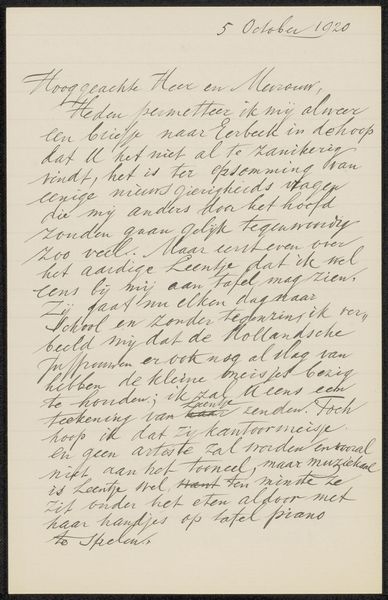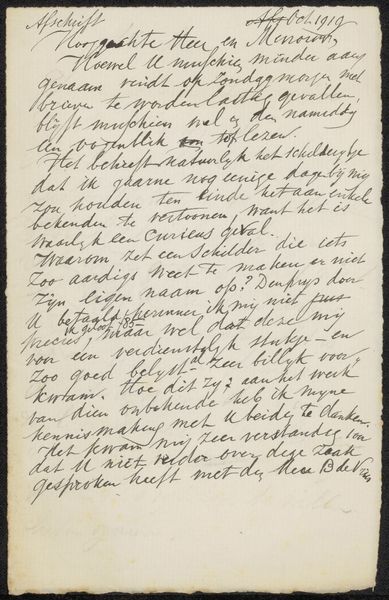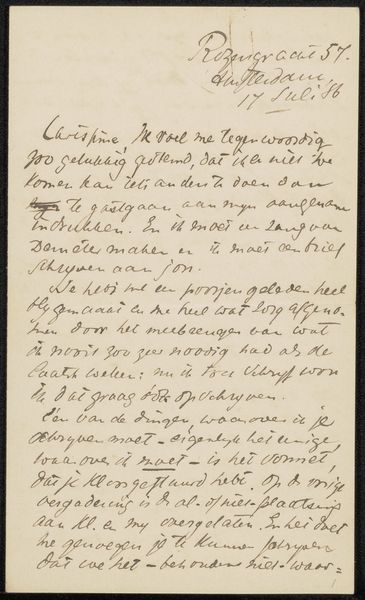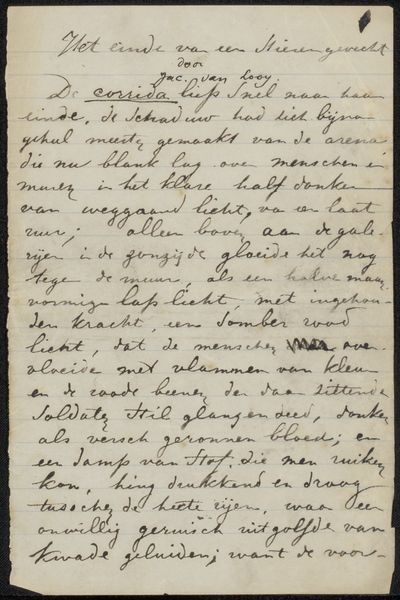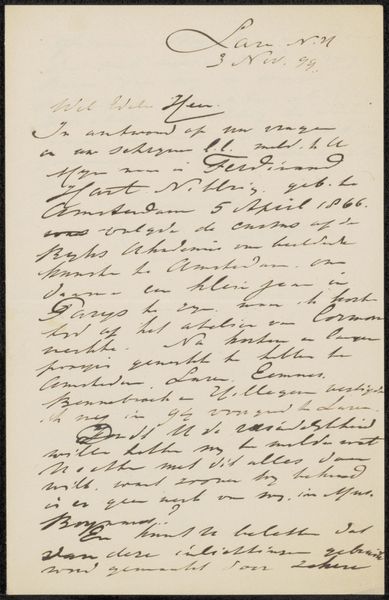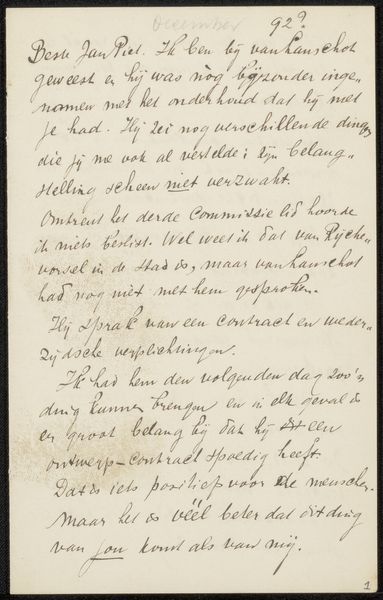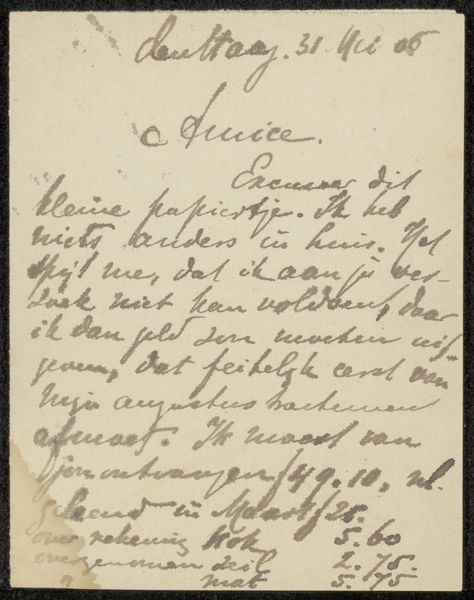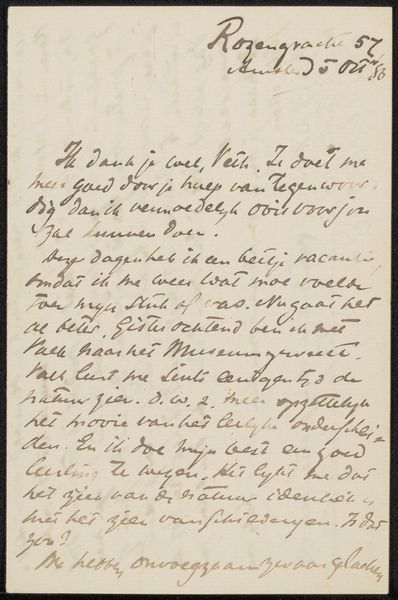
drawing, graphic-art, mixed-media, paper, ink, pen
#
drawing
#
graphic-art
#
mixed-media
#
hand-lettering
#
ink paper printed
#
old engraving style
#
hand drawn type
#
paper
#
personal sketchbook
#
ink
#
hand-drawn typeface
#
pen-ink sketch
#
pen work
#
sketchbook drawing
#
pen
#
sketchbook art
Copyright: Rijks Museum: Open Domain
Curator: Looking at this artwork by August Allebé, titled "Gedicht uit collectie August Allebé," dating between 1848 and 1927 and held here at the Rijksmuseum, my immediate sense is of intimacy and vulnerability. It seems so personal, almost like a glimpse into the artist's private thoughts. Editor: It feels… impenetrable, to be honest. Just a tightly packed page of looping script. Almost claustrophobic in its density, wouldn't you say? Like peering into a forgotten language or some kind of coded message. Curator: Absolutely. That sense of being 'sealed' or obfuscated ties into the potential sociopolitical dynamics during the artist's time. Allebé lived through enormous societal upheaval. The Netherlands was changing radically; this could be seen as a form of quiet resistance, expressing personal views within the confines of almost calligraphic secrecy. The artwork prompts consideration about access to voice and how cultural contexts shaped those parameters, especially when we consider language's capacity both to connect and exclude. Editor: That’s a very insightful reading. Looking more closely, beyond the words themselves, I’m struck by the consistent loop shapes, the repeated gestures in the writing. There’s an element of containment here – boundaries meticulously maintained by this swirling hand. I am really captured by that. Curator: Yes, that repetition really emphasizes how we are positioned as viewers attempting to decipher the social commentary inherent within the text, as well as trying to interpret its raw emotion. This is not purely artistic practice; this becomes, ultimately, a question of personhood and societal forces. It also seems to be on fragile paper, which connects the imagery itself with impermanence or possibly rebellion. Editor: Well, on reflection, I might consider those repetitive strokes to signify some aspect of ritual. This exercise of writing is akin to repetition, maybe offering catharsis by endlessly repeating its strokes. This repetition and constant echoing might carry the intention to process difficult circumstances by constant, repetitive mark-making and creating. Curator: I agree – there is, as always, something new to unpack in this artwork and so many interpretations to arrive at. Editor: Precisely, making it, perhaps, not so impenetrable after all. A layered viewing experience emerges on further exploration.
Comments
No comments
Be the first to comment and join the conversation on the ultimate creative platform.

